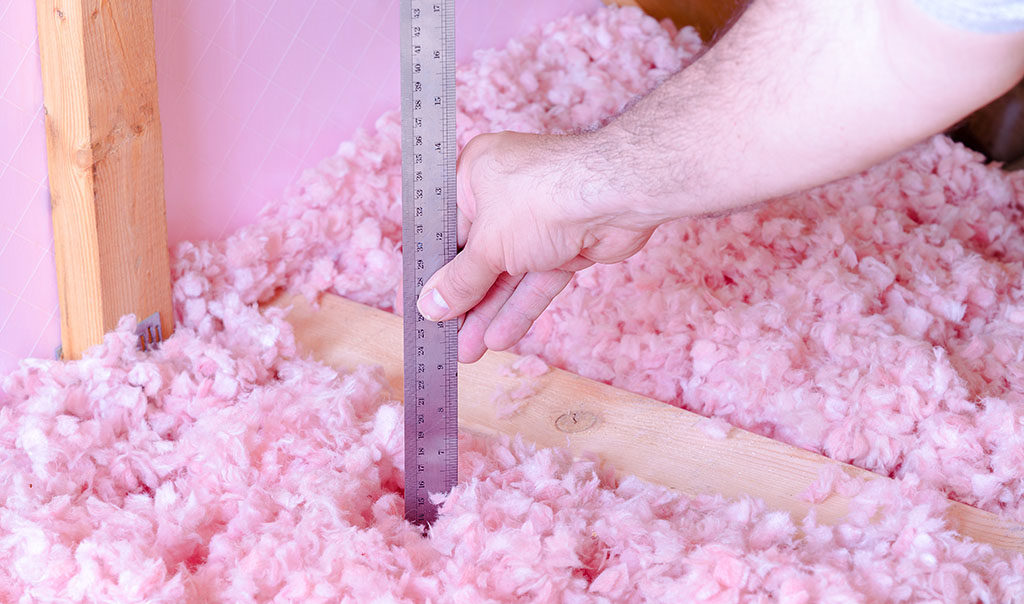That nice large attic in your home sure is great for storing all of the stuff you only need part of the year, or even the stuff you just haven’t had the time to go through and get rid of, isn’t it? It’s great to just be able to hide a box or two up there until you need whatever is inside of it again. But something that might not be so great about the attic in your home is the additional cost that can sometimes come with for several reasons.

A lot of times this additional space makes your air conditioning work extra hard to keep that extra space as cool as the rest of your home, especially in the grueling summer months we experience. It is expensive and most of the time doesn’t work that well, which may or may not be an indicator of an aging air cooling system.
Regardless, sometimes the heat from your attic simply seeps into other rooms in your home, driving up your AC bill and keeping the temperatures high anyway. So let’s take a little time to talk about some simple home improvement tasks that can keep that summer heat out of your home, all while helping to lower air conditioning bills while you go about it.
There are a few easy things you can do in regards to cooling your home. The most common of these is to properly insulate your attic space. A lot of times when older homes were built, this step was skipped, which means your attic could be completely uninsulated. And just as often the thought never really occurs to new homeowners to revisit it, which is a shame because it’s such a simple step that can really help your home quite a bit with little work required. The first way insulation works is by keeping heat away from and out of your home. This additional barrier helps keep the temperatures down by preventing the sun from penetrating too deep into your home, regardless of ambient temperatures. Even if it’s a scorching day outside, the right amount of insulation will work to keep most of that heat where it belongs — not in your attic. Obviously windows might be a completely different story when it comes to insulation, but this is the best way to keep that heat from seeping through the exterior walls and into your home’s living space too.
Since insulation works to keep air molecules where they are, it can also help in cooling your home by reducing the amount of cool air that escapes outside. This means your air conditioner catches a break because more of the cool air it is working to put in your home stays there. This is called convection, or the reduction in the movement of air. If your AC system finds itself having to work less hard to cool your home, that means you’ll be seeing lower air conditioning bills too. In this case, the insulation usually pays for itself.
Now, as with any home improvement project, there are things to keep in mind when adding insulation to your home or attic. It might be tempting to go out and buy the thickest possible insulation material you can find. The thicker the material, the more cool air will stay in and warm air will stay out, right? Not necessarily. Once you reach a certain thickness with your insulation material, the results you will see (and feel) usually tend to plateau. There’s a unit of measure for this called the R-value. Materials with an R-value between R30 and R60 are usually good enough for most attics to see diminished air bills and experience lowered temperatures. It’s also okay to add additional layers if your attic already has some insulation in place, but going above these numbers won’t really get you any increased benefits, so it’s better to save your money and spend it elsewhere. Of course, this all depends on the size of your attic or the space you’ll be insulating too. Keep that in mind.
Another solution besides adding solution to your entire attic is to simply seal potential air leaks that could be hiking up your energy bills. Before you add additional insulation, make sure that pathways between your living areas and the attic are sealed. These can include areas around wiring, plumbing, ceiling light fixtures, vents, and the attic door itself. If it’s not a space that’s used regularly, there is no need to keep these pathways open. These air leaks can tend to be a huge source of air infiltration and eliminating them can yield huge benefits when it comes to lowered AC bills and lowered temperatures in your home. Plus, it can usually be a lot less work than insulating your entire attic space.